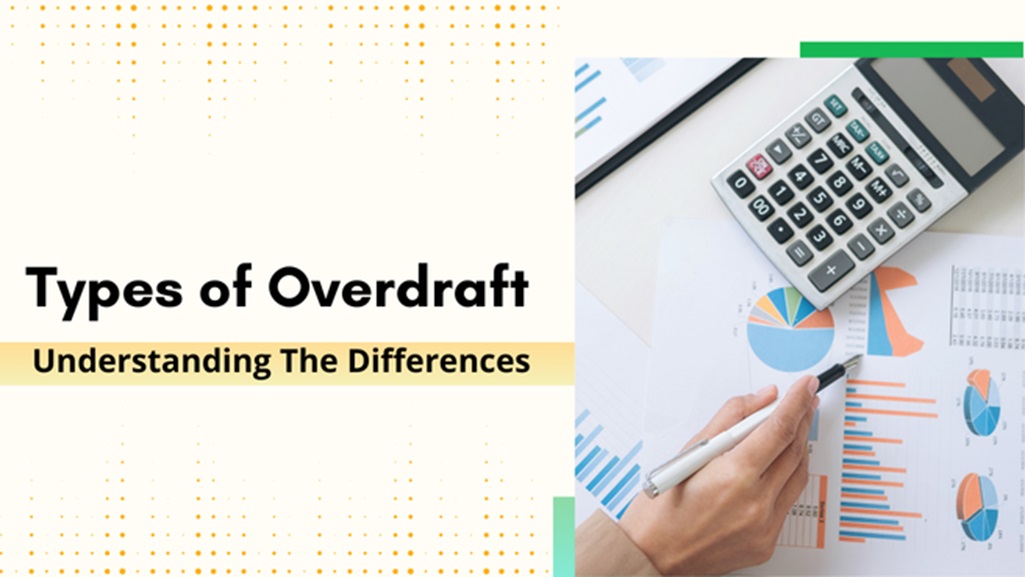Overdraft is a type of short-term financial assistance to the individual or group as a whole. An overdraft loan is directly linked to the business or current account. If you are running out of finances with insufficient funds in hand (in your account), then this loan will help you a lot in bringing stability to your life. It provides more and more money that you have available in your credit account. It acts as security for all your business or personal expenses. It helps the person to meet their financial expenses and to carry over their day-to-day business or personal needs. However, the rate of interest is lower than credit cards and you will get several benefits and relaxations from Overdraft loans.
An overdraft loan is charged with several types of fees and payments and it levies on the principal amount. This account is available in the form of several sorts of secured overdraft services against any type of fixed deposit, unsecured type of overdraft, or life insurance policy, all are based on the statement related to the average balance and syncs to the financial institution.
Key Specifications of Overdraft Loans
There are several key features that every overdraft loan borrower should know.
- With an Overdraft loan, businesses can easily get financial stability to organize their day-to-day activities as it helps the staff maintain healthy relationships with the lender.
- The penalties and fees that are charged for the interest rates provided by this loan may differ based on the additional amount of money you have overdrawn.
- Financial institutions generally consider and monitor this loan amount on the matter: of whether to keep this overdraft loan for the next round of repayment or not. It provides several types of advantages and benefits to the borrower.
- In this overdraft loan, the borrower can’t claim the interest paid for the protection of their amount for several types of tax deductions.
- It provides loans that attract higher interest rates.

Basic Eligibility for Borrowing Overdraft Loan
For getting the financial security of an overdraft loan, you won’t be required to submit collateral. You must have a good income source to show to your lender. Lenders also check your bank statement in order to know whether you can easily repay your debts on time or not. You have to maintain a good credit score to avail the benefit of an overdraft loan.
Cash Credit: What is it?
It’s also a kind of short-term loan and it is offered to various types of SMBs for tackling financial issues related to business operations. Financial institutions like NBFCs and authorized banks ask for the business borrower to check the security of the loan with collateral value or amount. This cash credit loan account helps the business to get urgent cash in order to fund their expenses
Difference Between a Cash Credit Account and an Overdraft Loan
Both the overdraft loan and the cash credit are the types of financial tools for small or large businesses that provide them immediate relief with enough working capital. The key difference between them is the method of loan disbursement and their security measures. Know here all:
Motive
On one hand, where cash credit accounts are used for various types of business financial requirements like purchasing more stocks, maintaining it and keeping all the business workflow in tune by paying their employees and meeting several fiancés.
On the other, an Overdraft loan can be easily used for dealing with personal financial issues and this fund can be utilized during an emergency crisis.
Interest Rates
The rate of interest is judged on the basis of the total loan amount offered to the borrower and hence, the interest is lower than usual. On the other hand, in an overdraft loan, the complete rate of interest is levied based on the overdraft amount along with several types of additional charges and fines.
Maximum Amount for the Loan
You may get the advantage of a credit limit of up to 60% value of the collateral you have submitted to your bank. In an overdraft loan, the bank will access or determine the maximum value of the provided information related to funds and budget. It depends on the specific budget based on your account statement. Some banks also consider your all transaction or payment behaviour along with your credit history.
Summary
There are differences between an overdraft loan and a cash credit loan. Both use a collateral value. The interest rates are lower in cash credit and it is higher in overdraft loans. The loan amount can be withdrawn only once from the cash credit account, while in the overdraft loan, one can withdraw loans multiple times as per the requirement of the borrower.




